Under directed energy weapons, so far we have covered particle beam weapons and high-power microwaves. Let us now take a look at some less-lethal laser weapons.
Directed energy laser systems are generally categorised as non-lethal or, more appropriately, less-lethal directed energy laser weapons and lethal high-energy laser weapons. These include laser dazzlers used in anti-personnel applications for anti-terrorist and counter-insurgency operations and lethal high-energy laser weapons system aimed at inflicting structural damage to the intended targets at tactical and strategic ranges. High-energy lasers used in anti-sensor applications as a part of electro-optic counter measure equipment also come under less-lethal directed energy laser systems.
Another important application of high-energy directed energy laser systems, when operated at relatively-lower power levels, is in safe neutralisation of unexploded ordnances with minimised collateral damage. These systems, generally configured around kilowatt-class bulk solid-state lasers or high-power fibre lasers, have amply demonstrated their efficacy in the disposal of unexploded ordnances including improvised explosive devices from a safe distance.
Less-lethal laser dazzlers
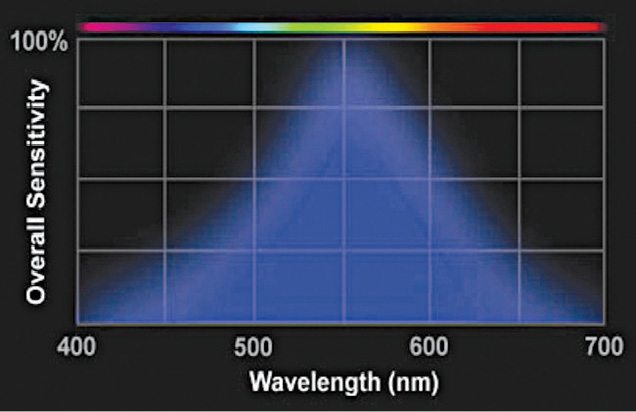
A low-intensity conflict (LIC) is the most common form of warfare today, and is likely to be so in the foreseeable future. Data suggests that more than 75 percent of the armed conflicts since World War II have been of the low-intensity variety. An LIC operation is a military term used for deployment and use of troops and/or assets in situations other than conventional war.
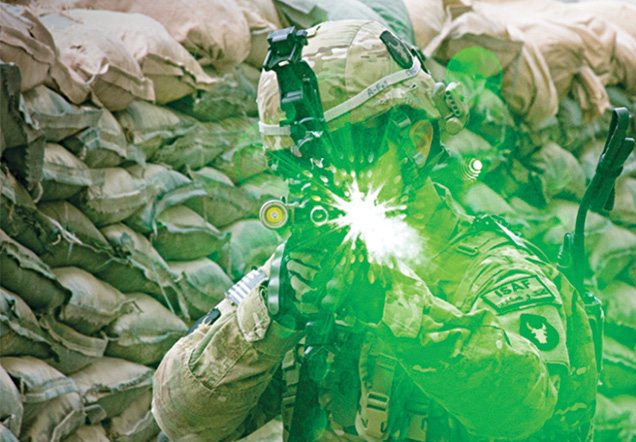
As compared to a conventional war, in the case of LIC operations, armed forces engaged in the conflict operate at a greatly-reduced tempo, generally with fewer soldiers, reduced range of tactical equipment and limited scope to operate in military manner. Also, use of artillery is avoided in the case of conflicts in urban territories, and use of air power is often restricted to surveillance and transportation of personnel and equipment.
LICs, which pose an alarming threat to national security, is an area of concern for the whole of international community, today. Its scope extends from emergency preparedness and response to domestic intelligence activities to riot and mob control, from combating illegal drug trafficking to protection of critical infrastructure, from handling counter-insurgency and anti-terrorist operations to detection of concealed laser weapons, from detection and identification of chemical and biological warfare agents to detection of explosive materials.
Laser and optoelectronics technologies play an important role in handling LIC situations. Key advantages of the use of laser weapons technology in such applications are near-zero collateral damage, speed-of-light delivery and potential for building non-lethal laser weapons. Some of the well-established laser devices in LIC applications include laser dazzlers for close-combat operations, mob/riot control and protection of critical infrastructures from aerial threats.
Operational parameters for Laser Weapons
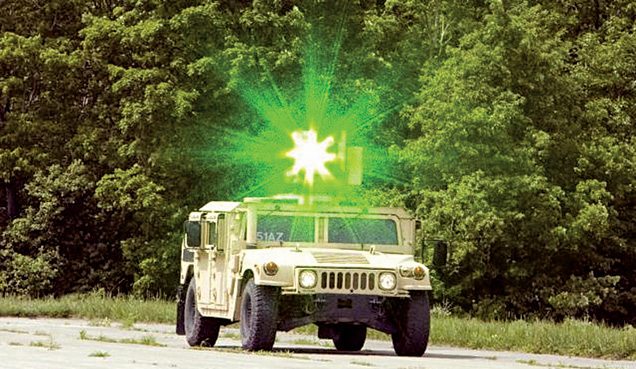
A laser dazzler emits a high-intensity laser beam in the visible band, usually in the blue-green region, to temporarily impair the vision of the adversary without causing any permanent or lasting injury or adverse effect to the subject’s eyes. Depending upon intended application, laser dazzlers come in a variety of package styles, mounting configurations and performance specifications. These devices can be handheld or weapon-mountable for versatility, convenience and ease of use. Some laser dazzlers have adjustable beam divergence that allows these to vary the spot size. While using a broader beam allows these a larger swath path needed to effectively produce a tactical advantage, tighter beams allow longer range and increased efficacy at longer distances.
Choice of operating parameters such as laser power, spot size at the target, laser power density and others are driven by the nature of deployment. Beam-shaping and directing optics are designed to achieve the desired value of nominal ocular hazard distance (NOHD) and a laser power density that does not exceed the maximum permissible exposure (MPE) figure dictated by American National Standards Institute (ANSI) standards for eye safety.
MPE, expressed as power density, is dependent on wavelength and exposure time. At 532nm, maximum permissible power density equals 2.5mW/cm2 for 0.25-second exposure and 1.0mW/cm2 for an exposure time of ten seconds.
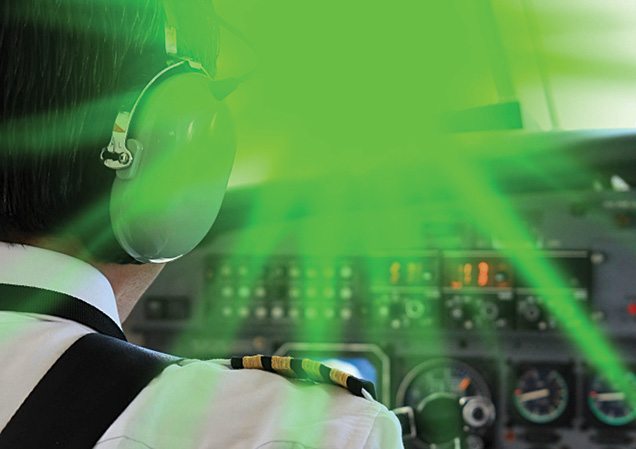
Blue-green region is the chosen wavelength band as the human eye is most sensitive to green light. Relative spectral response (Fig. 1) is used in determining lumens of a light source and thus how bright the light will appear in terms of lux. For a red light to appear as bright as a green light, the red light must emit more radiation than the green light because humans are not as sensitive to red light.
Most-commonly-employed wavelength from laser weapons for the purpose is 532nm, usually generated by using either laser diodes or frequency doubling Nd-YAG lasers. These devices usually produce a randomly-pulsed output in the range of 10Hz to 20Hz, riding a DC level for better overall effect. DC level is usually kept at 30 per cent to 50 per cent of peak intensity level. Night-time maximum operational range is typically three to four times the maximum day-time range.
To know more about laser weapons, turn to page 2.
Potential applications
Non-lethal laser weapons act as a force multiplier, enabling friendly forces to discourage, delay or prevent hostile action. A laser dazzler is a non-lethal weapon specifically designed for applications where subject vision impairment is to be achieved at a distance ranging from few tens of metres to several kilometres in bright ambient conditions. These are particularly effective in situations where use of lethal force is not preferred; examples being limiting escalation and temporarily disabling facilities and equipment.
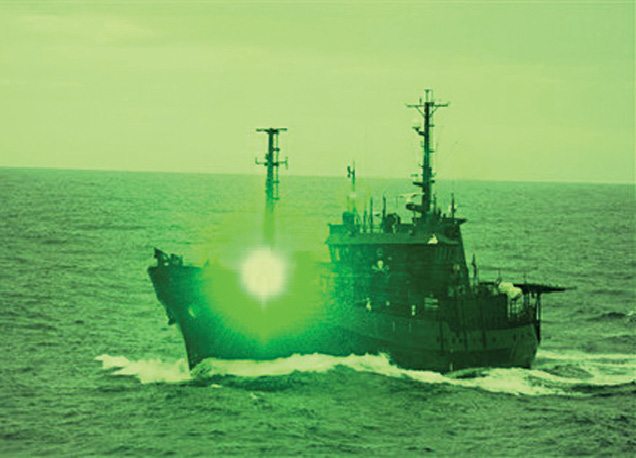
Less-lethal laser weapons such as laser dazzlers can be used for counter-insurgency, anti-terrorism, counter-sniper, self-defence (Fig. 2) and crowd-control (Fig. 3) and infrastructure-protection applications.
Laser dazzlers are emerging internationally as the new non-lethal alternative to lethal force for law enforcement, homeland security (Fig. 4), border patrol, coastal protection, ship defence from asymmetric threats (Fig. 5), aircraft defence against shoulder-fired missiles (Fig. 6), infrastructure protection and host of other low-intensity conflict scenarios.
Such vehicles are usually equipped with remotely-controlled Laser weapons station for a wide range of applications. Technology of the short-range laser dazzler and crowd-control laser dazzler is more or less similar, except that the latter system employs a larger power source to be able to produce the desired power density in a larger beam spot. Some means of scanning the laser beam spot may also be necessary.

Laser dazzlers are also being considered as a potential candidate for warning the crew of commercial airliners or military aircraft who tend to violate intentionally or unintentionally the no-fly zone. Such systems in a networked configuration of multiple laser dazzler stations and radars could be effectively used for protection of critical infrastructure or assets.
In a system like this, the radar provides the initial clue about the rogue or suspect aircraft when it is still more than 100km away from the actual asset to be protected. It keeps a continuous vigil on the suspect aircraft till it comes within the tracking range of the electro-optic tracker, which is usually an integral part of the laser dazzler station.
The electro-optic tracker station takes the cue from the radar and tracks the target with much higher accuracy needed for the dazzling action. Exposure to a strong laser light source results in flash blindness and after-images. In flash blindness, exposure to a very bright light source deprives the pilot of vision for a period of time ranging from a few seconds to a few minutes.
Also, laser illumination fills the flight deck with a bright light, thus making it difficult to concentrate on flight instruments as well and adversely affecting pilot’s intended actions. Before the aircraft cockpit is flooded with dazzling laser light, much lower power levels are employed to send a kind of warning signal to the crew to know their intent. This helps in discriminating rogue aircraft from those that might have gone astray unintentionally.
Representative laser dazzler systems

A large number of companies are offering short- to medium-range laser dazzler systems for various application scenarios. One such short-range laser dazzler is Compact High Power (CHP) laser dazzler from LE systems, USA (Fig. 7). The dazzler emits 500mW flashing green dazzling laser beam. The CHP with its higher power creates a credible glare effect in a larger spot size for use on moving vehicles or individuals. This feature is particularly important for protection of entry control points and convoys, at distance, in bright ambient conditions. The CHP laser dazzler has been comprehensively evaluated to demonstrate no lasting eye damage from repeated direct exposures beyond the specified 20m stand-off distance.
GLARE MOUT is a non-lethal visual disruption laser with an effective range of 20m to 2km.The device is ideally suited for small arms integration as well as mobile crew-served applications. When a suspect approaches a restricted or controlled area, such a device can be used to give warning to that person before shots have to be fired. It is configured around 125mW green laser emitting at 532nm. It has an NOHD of 18m. Its shockingly bright-green beam sends an irrefutable, multi-lingual, cross-cultural, unambiguous message that you mean business. Reports confirm that GLARE MOUT has saved numerous lives of both soldiers and non-combatants in Iraq and Afghanistan.

GLARE GBD-IIIC, a long-range variant of GLARE MOUT, is a visual deterrent laser device for hail and warning applications. It is an effective dazzler ideally suited for ship-to-ship signaling or airborne over-watch. With twice the power and a more concentrated beam than GLARE MOUT, this device can effectively hail and warn as far away as 4km.
Like GLARE MOUT, GLARE GBD-IIIC produces an overtly bright-green diffused laser spot to impair the visual ability of a suspect. Fig. 8 shows the photograph of the device. It is configured around a 250mW green laser operating at 532nm. It has an operational range of 72m to 4000m with lower limit being the NOHD for the unaided eye. A fixed-beam divergence of 4mrad to 5mrad produces a spot size of about 30cm at the minimum operating range. With the optional eye-safety module, the device automatically shuts off when the targeted personnel are within the NOHD.
To know more about laser weapons, turn to page 3.

GLARE LA-9/Palso, built around a 250mW green laser, is yet another long-range visual deterrent laser device for hail and warning applications. It is intended to be effective from 0.3km to 4km for ship-to-ship signaling or airborne over-watch applications. This system has an additional feature of automatically shutting off the device if the subject target is within the NOHD. The device is equipped to rapidly detect if a bystander within inside the NOHD; it shuts off the glaring laser output to prevent unintended eye injury.
Saber 203 Grenade Shell Laser Intruder Countermeasure System is a type of laser dazzler that uses a 250mW red laser diode mounted in a hard plastic capsule in the shape of a standard 40mm grenade. It is suitable for being loaded into a M203 grenade launcher and has an effective range of 300m. It is controlled via a box snapped under the launcher, with batteries and a firing switch housed in this box. In emergencies, it can be quickly ejected and replaced with a grenade. Saber 203 dazzlers were used in Somalia in 1995 during Operation United Shield. Fig. 9 shows the photograph of another laser dazzler, which operates on green wavelength. Mounted on M240B, it was used during Iraq war.

The Chinese JD-3 laser dazzler and ZM-87 portable laser disruptor are other established systems. JD-3 laser dazzler is reported to be mounted on Chinese Type 98 main battle tank and is coupled with a laser radiation detector, and automatically aims for the enemy’s illuminating laser designator, attempting to overwhelm its optical systems or blind the operator.
ZM-87 portable laser disruptor is an electro-optic countermeasure laser device. It can blind enemy troops up to a range of 3km and temporarily blind them at up to 10km range. ZM-87 has been widely-deployed, including its use on naval vessels.

Photonic Disruptor, classified as Threat Assessment Laser Illuminator (TALI), is yet another non-lethal high-power green laser developed by Wicked Lasers, USA, in cooperation with Xtreme Alternative Defence Systems. This tactical laser is equipped with a versatile focus-adjustable collimating lens to compensate for range and power intensity when used to either incapacitate an attacker in close range or safely identify threats from a distance. TALI-series devices are configured around a 100mW, 532nm laser producing a laser beam with 1.5mrad to 7.5mrad adjustable beam divergence.
Dazer Laser (Fig. 10) from Laser Energetics Inc., USA, is yet another very popular device. It comes in two variants, namely, Guardian that has a range of 1m to 300m (model-dependent) and Defender that has a range of 1m to 2400m (model-dependent). Both variants temporarily impair the vision of the target adversary and succeed in eliminating the threat’s ability to see, engage or effectively target the user. This provides the user with a significant advantage over the threat at longer and safer stand-off distances. Both variants are designed to be eye-safe at all ranges beyond 1m and meet the current ANSI safety standard Z136.1.
A vehicle-mounted laser dazzler system designed to control violent crowds and unruly mobs was earlier shown in Fig. 3. Defence Research and Development Organization (DRDO), India, has also developed a short-range hand-held laser dazzler and a vehicle-mounted laser dazzler for crowd-control applications.
For reading more Aerospace and Defence articles: click here
Dr. Anil Kumar Maini is former director, Laser Science and Technology Centre, a premier laser and optoelectronics research and development laboratory of Defence Research and Development Organisation of Ministry of Defence










